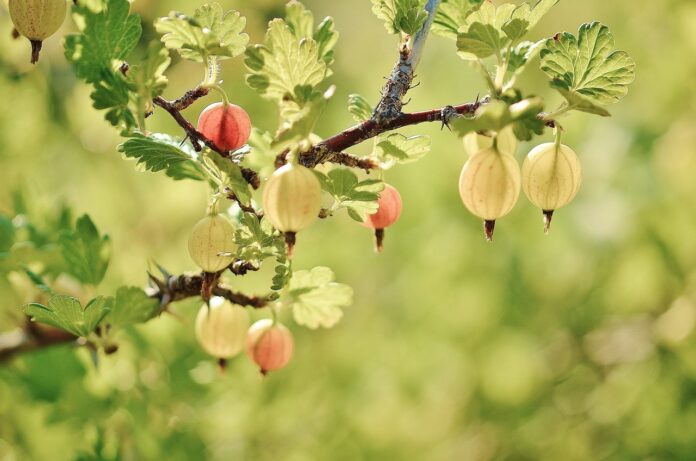Gooseberries, though not the most popular berry, are cultivated by many gardeners on their plots. These fruits are packed with vitamins and other beneficial substances. It’s a mistake to think of gooseberries as sour—when ripe, they are not only juicy but also incredibly sweet with a pleasant tang.
However, unripe berries can be so tart that they cause a puckering sensation in the mouth. But who eats them unripe? It’s better to be patient and wait for them to ripen.
Facts About Gooseberries
- First Described: The plant was first described in a book published in 1536.
- Native Regions: In the wild, gooseberries grow in Eurasia, Africa, and North America. It is believed that the plant originated either in Western Europe or northern Africa.
- Plant Size: Gooseberry bushes usually don’t exceed 1-1.2 meters in height.
- Berry Size: The largest gooseberries can grow up to 3-4 centimeters long, although they are usually about half that size.
- Uses: Gooseberries are used in both confectionery and winemaking.
- Variety: There are currently more than 1,500 varieties of gooseberries.
- Folk Medicine: In traditional medicine, gooseberries are used as a laxative, as well as a diuretic and choleretic agent.
- English Name: In English, it’s called “gooseberry,” though even the English aren’t sure why geese are associated with the fruit.
- Kiwi Connection: The exotic fruit kiwi was developed by cultivating Chinese gooseberries, and is a related plant.
- Botanical Classification: Botanists classify gooseberries as part of the currant family.
- American Powdery Mildew: At the beginning of the last century, American powdery mildew (a plant disease) destroyed almost all gooseberry plantations. Breeders have since developed resistant varieties, but gooseberries never regained their former popularity.
- Pectin-Rich: Gooseberries are rich in pectin, a substance that helps the body combat environmental pollutants and eliminates toxins, waste, and heavy metal salts from the body.
- Wild Growth: Sometimes, cultivated gooseberries can revert to a wild state and spread to forests. Wild gooseberries can be found in various regions of Russia, including Kostroma, Tver, Tula, Tambov, Yaroslavl, Smolensk, Moscow, Vladimir, Kaluga, Ryazan, Bryansk, Oryol, Samara, Saratov, and Ulyanovsk regions.
- Ancient History: While it’s hard to find myths or legends about gooseberries like those associated with other plants—since the ancient Greeks and Romans were unaware of them—they have been growing in Europe since prehistoric times in the wild.
- Tannins and Dyes: Gooseberry leaves contain tannins and dyes.
- Wild Origins: The wild gooseberry is the ancestor of most cultivated varieties.
- Low-Calorie: Gooseberries are low in calories, with only 44 calories per 100 grams of berries.
- “Northern Grape”: Italians visiting Russia during the time of Peter the Great were surprised to see these unknown berries, and they dubbed them “northern grapes.”
- 19th-Century Cultivation: Russian breeders began actively cultivating gooseberries and creating new varieties in the 19th century.
- Habitat: Wild gooseberries grow among shrubs on rocky mountain slopes, from the lower to the upper belts.
- Valuable to Beekeepers: This plant is highly valued by beekeepers as the earliest of all berry shrubs. Although gooseberry fruits ripen only at the end of summer, usually in August.
- French Cuisine: The French use unripe gooseberries to enhance the flavor of their dishes, while ripe berries are consumed fresh.
- Popular in Portugal: In Portugal, drinks made with milk or mineral water and gooseberry juice are popular.
